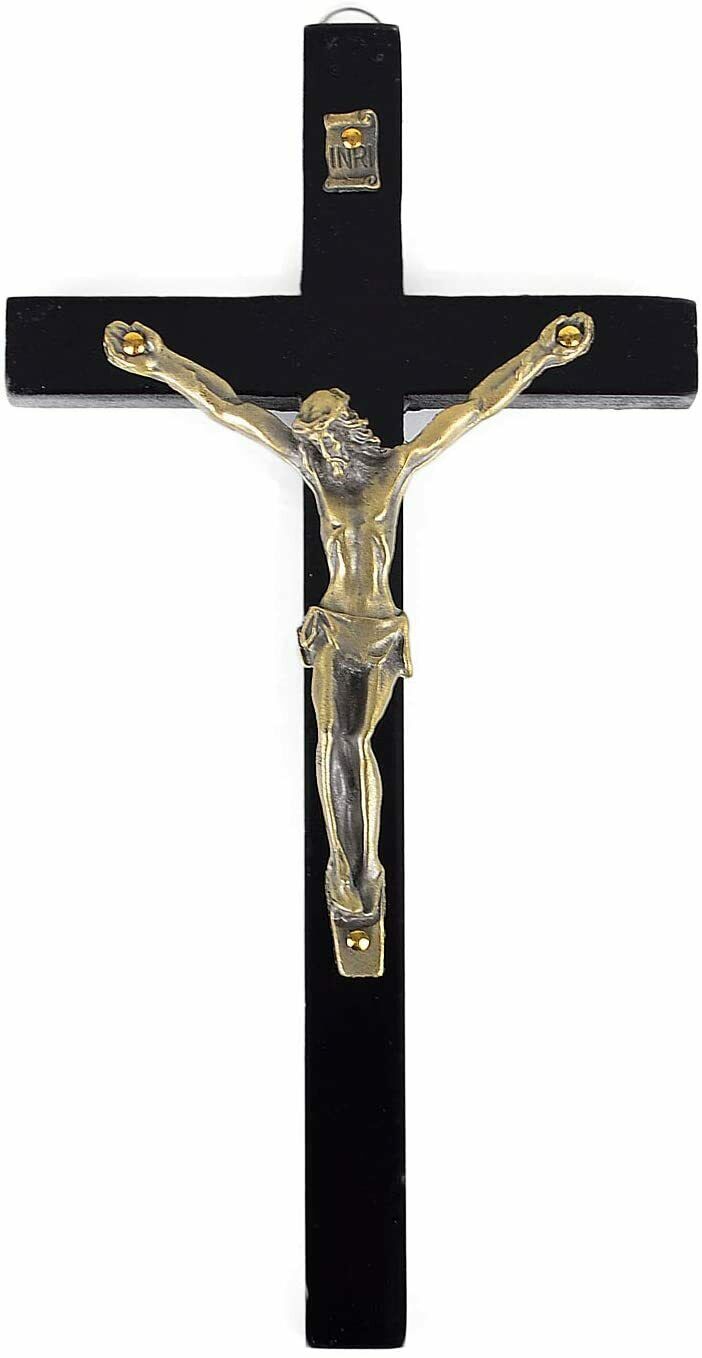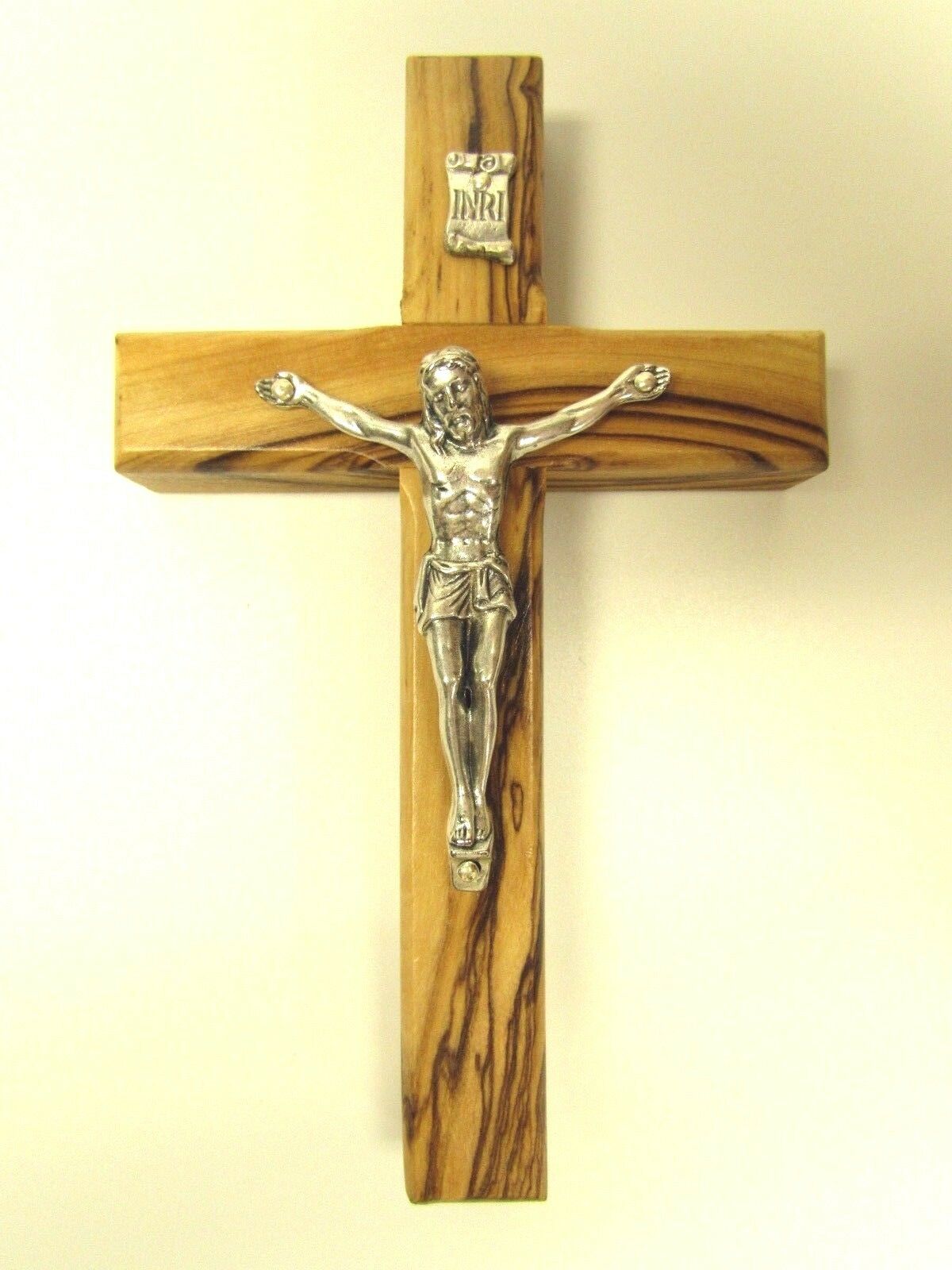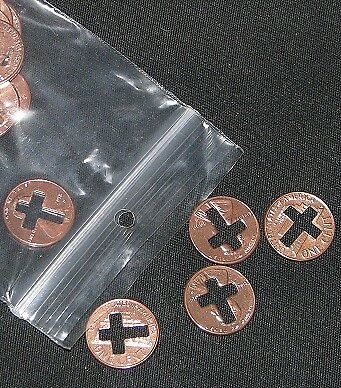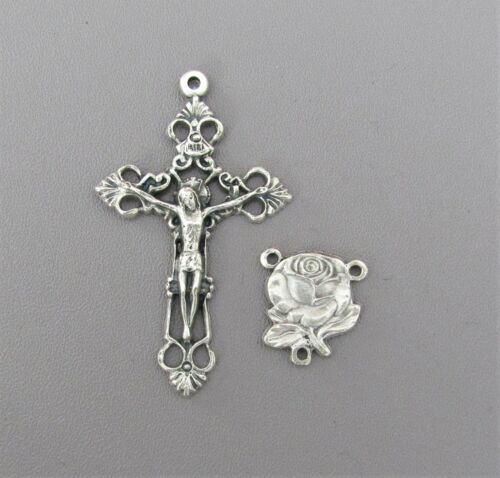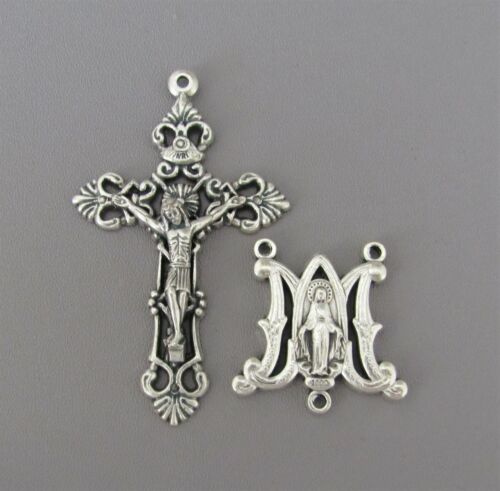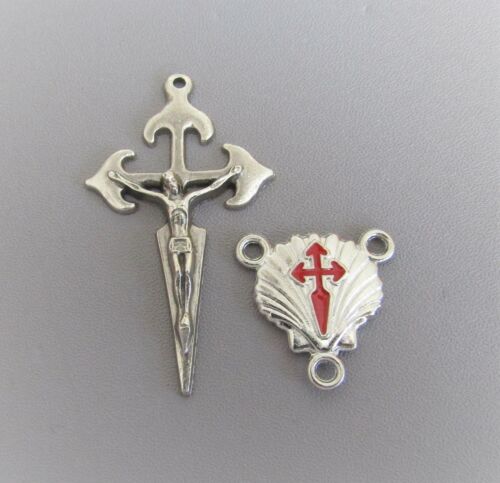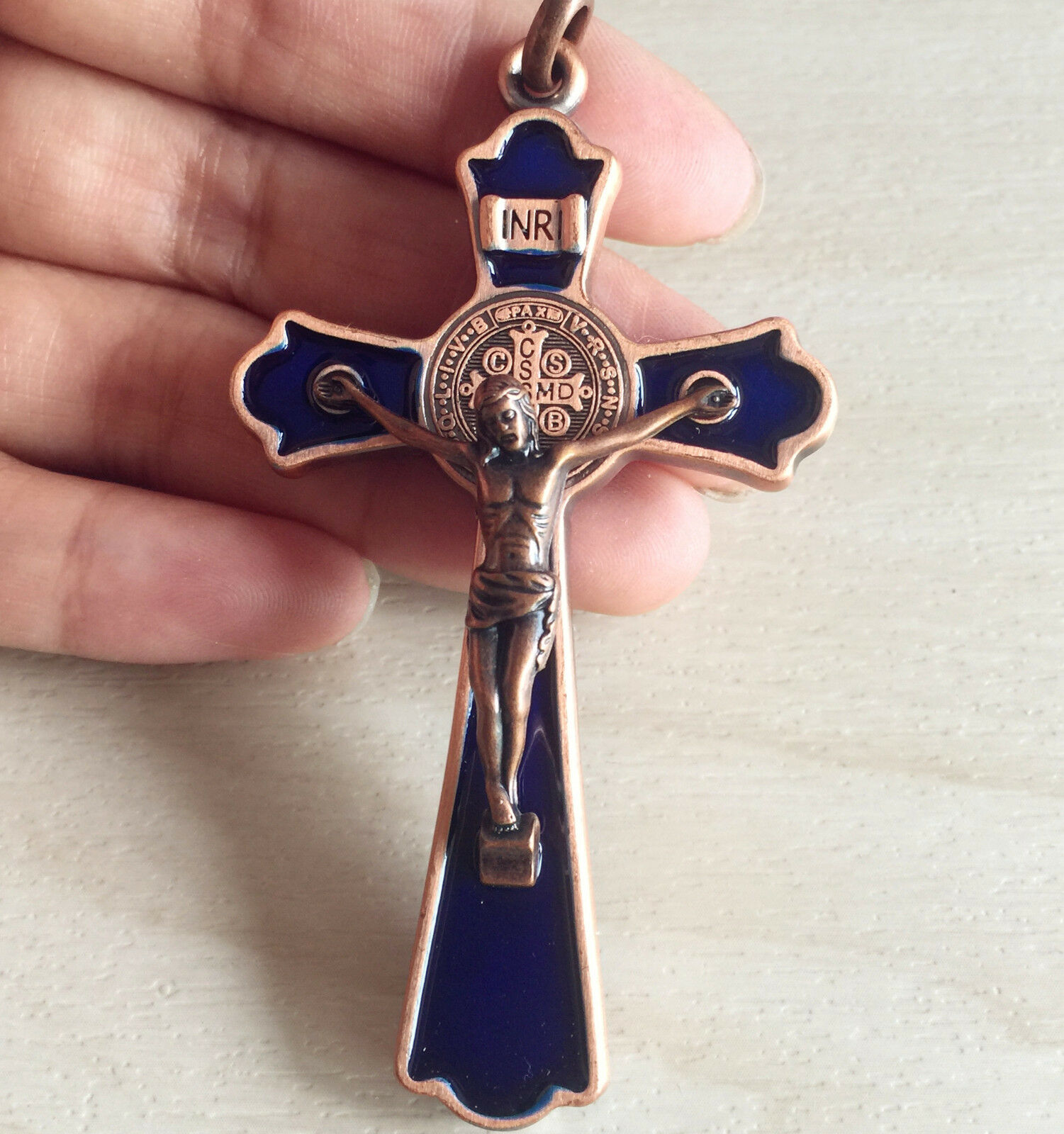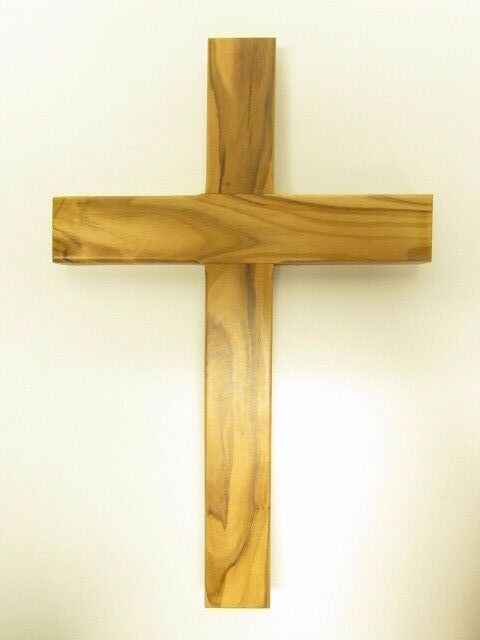-40%
ANTIQUE c.16-17th CENTURY RUSSIAN NORTH "OLD BELIEVERS" ORTHODOX CROSS PENDANT
$ 36.43
- Description
- Size Guide
Description
Antique medium-sized (approx. 1-1/2" tall with solid bale) Orthodox Cross pendant featuring plain and humble right-angled Russian "Old Believers" design with image of the three-bar Savior's Crossdepicted according to ancient Russian North tradition
with the Instruments of the Passion over the skull (Adam's head). The Cross appears to have been hand made from a historical bronze or similar copper alloy of unknown composition. Origin likely c. 16-17th century Russia (based on similar items listed in available catalogs; please see the last two pictures for a reference). The item shows significant signs of wear due to its old age and devotional wearing, such as reduced quality of artwork, deformations of the original shape, scratches or superficial cracks, dents and patches of patina/oxidation. Most of the original thick patina has been removed using a complex procedure of cleaning and polishing. The inside of the necklace bale shows signs of wear consistent with long continuous wearing. The size of the Cross is shown on the photographs for this listing.
The obverse bears an image of the three-bar Suppedaneum cross venerated as the True Savior's Cross in the Orthodox and some Eastern Catholic churches. Such a cross has three horizontal crossbeams: the top one represents the "INRI" nameplate, and the bottom one, a footrest. The footrest crossbeam is depicted pointing up, toward Heaven, on Christ's right hand side where the Penitent thief, St. Dismas was crucified.
The Savior's Cross is depicted according to ancient tradition of Russian North with its top crossbeam attached on the top of the Cross.
The crossbar ends of the pendant display small rhomboid or "Lozenge"-like shapes incorporating abbreviated inscriptions in Church Slavonic. The top end of the vertical crossbar shows a Cyrillic abbreviation appearing as "KING", a part of the traditional "King of Glory" title used in the Eastern Orthodox crosses as a nameplate in their top part. The side ends of the central horizontal crossbar bear the Sacred Name of Jesus inscribed as the ancient Greek Christogram, the "IC" on the left, and the "XC" on the right. The bottom end of the vertical crossbar has an inscription appearing as "HIKA", a Cyrillic version of the ancient Greek "NIKA" ("VICTORIOUS") symbol of Christ's victory achieved through His death on the Cross. The lozenge ornaments appear as early as the Neolithic and Paleolithic period in Eastern Europe, and symbolize a sown field and female fertility. The ancient lozenge pattern often shows up in Diamond vault architecture, in traditional dress patterns of Slavic peoples, and in traditional Ukrainian embroidery. The lozenge pattern also appears extensively in Celtic art.
A symbolic image of the skull, or Adam's head, buried in the cave below the Crucifixion Cross refers to Golgotha (Calvary), the elevated site where Jesus was crucified, which the Bible says means "the place of the skull" in Hebrew. An ancient tradition of Catholic and Orthodox Churches held that it was also the burial place of Adam, thus also symbolizing the ultimate victory of Christ over sin and death.
The reverse shows traces of a heavily worn off text of a prayer. Usually, such a prayer would represent an abbreviated version of Psalm 68 in Church Slavonic or an Orthodox hymn before the Holy Cross.
Please examine all photographs carefully and do your own research if necessary. Please note that photographs are an important part of the item's description. The U.S. quarter coin, decorative stone and measuring meter are not for sale, and might be photographed with the item in order to provide a size reference. Please ask all questions before making a purchase. There are no guarantees with the listing because most items are original vintage or antique objects that are quite old. All items are sold "as is" with no returns because of a change of mind offered. Shipping and handling is free for the continental US.
International shipping is handled by Ebay Global Shipping Program. International buyers, please familiarize yourself with the Global Shipping Program through the Ebay "Help" section and ask your shipping questions, if any, prior to buying.
Please note that customs regulations differ from country to country, and it is a buyer's responsibility to ensure that any customs fees or other duties collected by the buyer's country are paid and satisfied in full.












